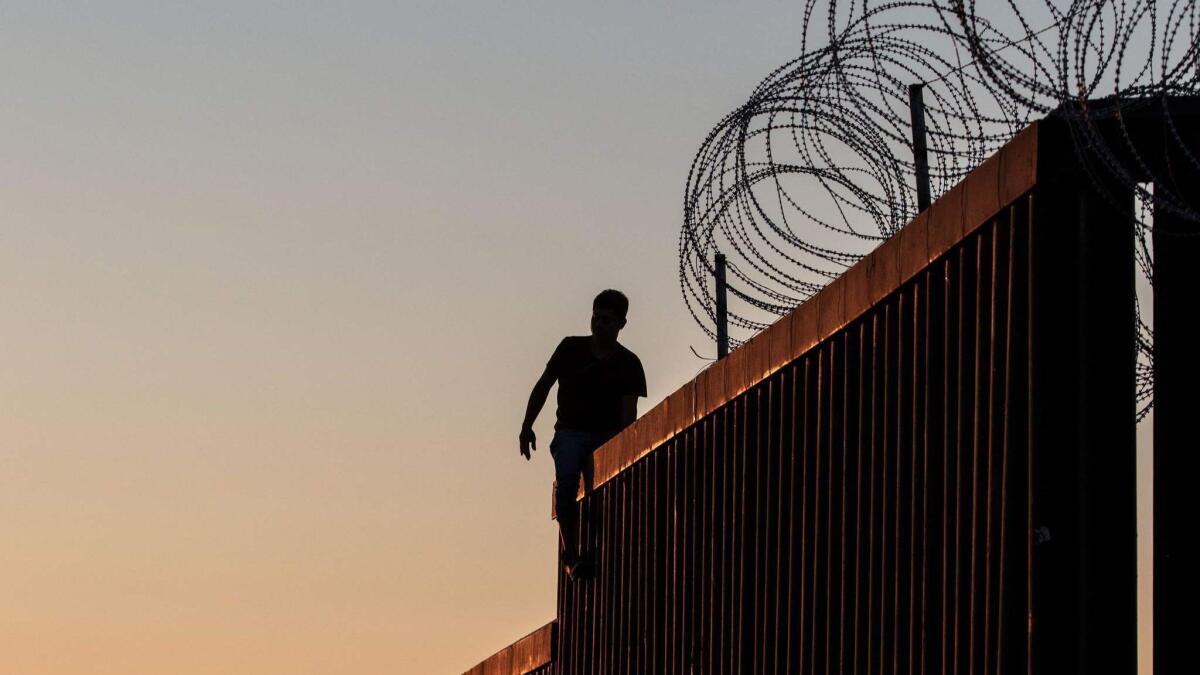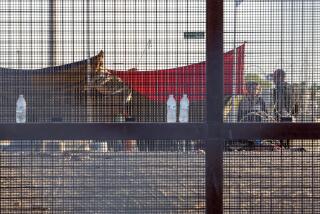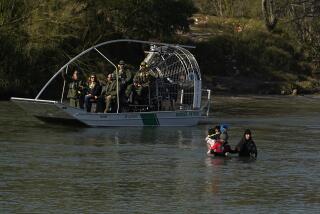White House defends Border Patrol after 7-year-old Guatemalan girl dies in custody

The White House defended the Border Patrol on Friday after a 7-year-old Guatemalan girl died of exhaustion and dehydration while in custody, but the child’s death — and the border agency’s weeklong delay in disclosing it — prompted an outcry on Capitol Hill.
The case intensified scrutiny of Border Patrol detention practices and raised questions about whether agents’ negligence contributed to the death. It also sparked concerns that the Trump administration’s immigration crackdown has funneled migrants into more dangerous areas along the border.
Homeland Security officials said they had launched an inspector general’s investigation into the death and whether regulations were followed, and were awaiting results of an autopsy to determine the official cause of death.
Hogan Gidley, the deputy White House press secretary, called the girl’s death “a horrific, tragic situation” and “100% preventable.”
But he blamed Congress, and especially Democrats, for not passing what he called “some common-sense laws to disincentivize people” from crossing the border illegally.
Gidley also placed responsibility for the girl’s death on her father, rather than any consequence of policy decisions.
“Does the administration take responsibility for a parent taking a child on a trek through Mexico to get to this country?” Gidley said. “No.”
The girl, identified by Customs and Border Protection as Jakelin Caal Maquin, was with her father and 161 other migrants who crossed into a remote, rugged part of New Mexico last week. They were about 90 miles north of the border around 9:15 p.m. on Dec. 6 when they turned themselves in to three Border Patrol agents.
The child died just over 24 hours later in custody.
She was initially taken into custody at Forward Operating Base Bounds, an outpost near the Antelope Wells border crossing, and around 5 a.m. on Dec. 7 was bused about 90 minutes to the Lordsburg Border Patrol station, Homeland Security officials said Friday.
But by the time she arrived at the station, she had begun to suffer seizures, her temperature had jumped to 105.9 degrees and she had stopped breathing. She was taken by helicopter to Providence Children’s Hospital in El Paso, Texas, about 165 miles away, but died after a heart attack early on Dec. 8.
Tests at the hospital showed brain swelling and physicians diagnosed the girl with liver failure, a Customs and Border Protection official told reporters in a conference call Friday. According to the hospital’s initial assessment, the girl died due to sepsis shock, dehydration and exhaustion, said the official, who spoke on condition he not be identified.
Customs and Border Protection, the parent agency of the Border Patrol, initially said the girl “reportedly had not eaten or consumed water for several days,” but on Friday officials said that the migrants were offered water at the base where the girl was initially held.
The agency did not publicly acknowledge the girl’s death, or report it to Congress, until after the Washington Post reported it Thursday night.
Under a 2018 law, Customs and Border Protection must report to congressional appropriations committees “the death of any individual in CBP custody or the death of any individual subsequent to the use of force by CBP personnel within 24 hours, including relevant details regarding the circumstances of the fatality.”
The committees were not notified, according to aides to Sen. Patrick J. Leahy (D-Vt.), the ranking member on the Senate Appropriations Committee, and lawmakers on the House Appropriations Committee.
Customs and Border Protection Commissioner Kevin McAleenan did not mention the death when he testified Tuesday to the Senate Judiciary Committee about oversight of the Border Patrol.
A Homeland Security official said Friday that Customs and Border Protection is reviewing its disclosure and notification process.
Sen. Dianne Feinstein (D-Calif), ranking member of the Judiciary Committee, called the death “heartbreaking and unacceptable.” She added, “Families walking hundreds of miles across the desert for a chance for refuge in the United States are desperate. This country owes them compassionate, humane treatment.”
According to a Homeland Security official who briefed reporters, Border Patrol agents conducted initial screenings of the girl and the other migrants after they were first taken into custody. The official said the girl’s father signed a form attesting neither he nor his daughter were ill.
But the tiny Bounds outpost was swamped by the large group and agents began to bus them to the larger Border Patrol station at Lordsburg, a rural town about 90 minutes away. The bus first took unaccompanied minors and others considered a priority, so the girl and her father were not picked up for about eight hours, the official said.
At that time, the father notified authorities that his daughter was sick and vomiting, the official said, and agents called ahead to Lordsburg for an emergency medical technician to meet the bus. By the time it arrived, just before 6:30 a.m., the girl wasn’t breathing and a medevac was called in to fly her to the hospital.
“These are very remote locations we’re talking about … no one lives out there,” the Customs and Border Protection official said. “The reality is, at that remote part of the border, there was no faster means to get medical treatment.”
The Trump administration says the Border Patrol has been overwhelmed by a surge of families and unaccompanied minors seeking asylum in the U.S. — including more than 5,000 mostly Central American migrants who recently arrived on the border in caravans.
Last month, Border Patrol agents apprehended 25,172 family members on the border, a record, and 5,283 unaccompanied minors.
But overall, apprehensions — the most common measure of illegal immigration — are at historic lows.
In the fiscal year that ended in September, border authorities apprehended 521,090 people. By comparison, from the 1980s to the mid-2000s, the government usually apprehended more than 1 million migrants a year.
The Trump administration has sought to direct migrants to seek asylum only at official ports of entry, but Border Patrol agents have blocked or delayed many from doing so, according to migrant advocates and lawyers.
The resulting backlog may have encouraged the migrant group to cross into a remote part of New Mexico on a path that ultimately led to the girl’s death.
Twitter: @mollymotoole
More to Read
Get the L.A. Times Politics newsletter
Deeply reported insights into legislation, politics and policy from Sacramento, Washington and beyond. In your inbox three times per week.
You may occasionally receive promotional content from the Los Angeles Times.







